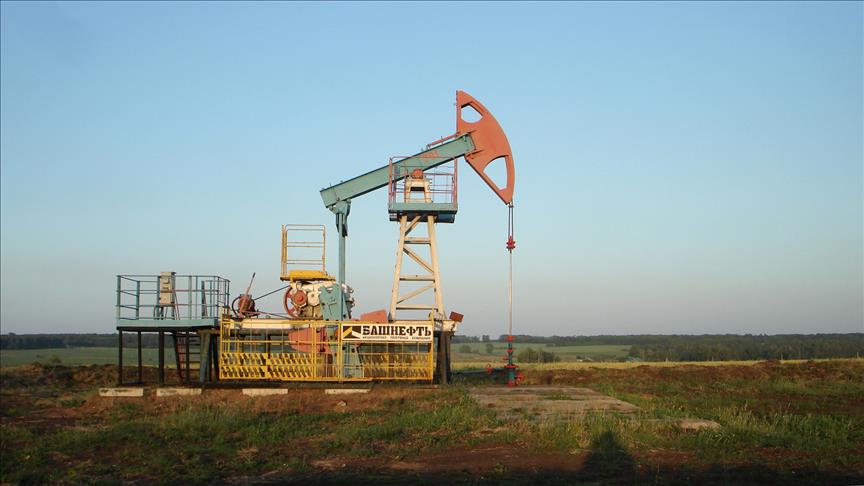
By Ovunc Kutlu
ANKARA
The U.S. shale oil production is expected to decline amid falling oil prices, while OPEC will hold firm on its market share by refusing to cut production, experts say.
"The U.S. oil production will fall in 2015," Ed Hirs, an energy economist at the University of Houston told The Anadolu Agency.
"Producers have cut capital spending and drilling plans. Any decline in the pace of drilling will lead to a rapid decline in overall U.S. oil production," he added.
The global benchmark Brent crude oil price has decreased over 30 percent since June, and fell below $70 per barrel on Friday, the lowest point in four years.
The Organization of the Petroleum Exporting Countries, OPEC, met on Thursday to devise a strategy against the falling oil prices, and decided not to cut production.
"OPEC faces a significant challenge over how to respond to the U.S.' oil production," said Richard Mallinson, a geopolitical analyst at London-based energy market consultancy Energy Aspects.
"If OPEC had cut production to support prices, that would simply encourage the U.S. oil output to carry on growing, transferring the market share from OPEC to the U.S.," he added.
Saudi Arabia reduced its selling price for the U.S. on Nov. 5 to secure more market share and compete with domestic oil producers in the U.S.
The U.S. crude oil production increased significantly from five to 7.4 million barrels per day between 2008 and 2013, the data on U.S.' Energy Information Administration shows.
"It is all about return on investment for the U.S. independent oil producers," said Hirs adding that some U.S. companies' drilling and production will decline if their bank loans are reduced.
Hirs stated that well-funded companies that have saved large amounts of cash can buy weaker competitors, adding "they can acquire proven assets and inventory for drilling at a lower cost than developing the prospects internally."
Oil prices and OPEC move for 2015
"Prices are likely to be in the low $70s per barrel for the first half of 2015 and could go even lower, said Mallinson.
"Lower prices over the next six months will start to slow non-OPEC supply growth, as well as encourage more demand growth," he added.
Weak global demand and glut of supply in the oil markets are some of the main reasons for the price slump since June, according to energy experts.
"Our analysis shows that an increase of supply of just one percent can lead to a price decrease of 25 percent," Hirs said.
The slow growth rate of Asian and European economies and the increasing value of the U.S. dollar that hampers the purchasing power of oil-dependent countries are also regarded to be contributing factors for the price drop.
"The catalysts for the lower oil price have been the stronger U.S. dollar, which made oil more expensive to OPEC's best customers in their local currencies," Hirs said.
Mallison stressed that if more OPEC members are increasingly willing to participate in a collective cut, the oil cartel can convene before their meeting in June.
"I see a good chance that OPEC will decide to arrange an extraordinary meeting before June 2015," said Mallinson.
"The longer producers have to endure lower oil prices, the more financial pressure they will face and the more likely they will want to compromise and agree a cut," he concluded.
Anadolu Agency website contains only a portion of the news stories offered to subscribers in the AA News Broadcasting System (HAS), and in summarized form. Please contact us for subscription options.







